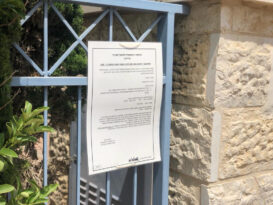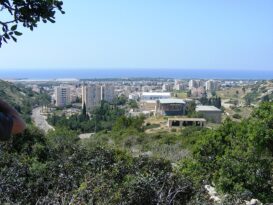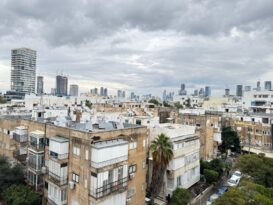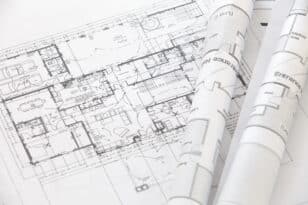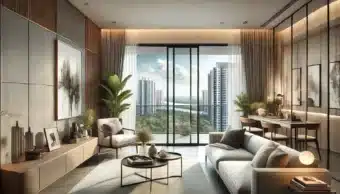A recent court ruling clarified that when calculating the 140 sqm exemption from the betterment levy for expanding a residential apartment, the areas of storage rooms (up to 20 sqm) and the safe rooms (Mamad) are not included. The court found that storage and safe rooms serve auxiliary or protective purposes and that including them in the exemption limit goes against the law’s purpose, which gives them special exemptions to encourage building them.
By Attorney Yonatan Schiff
In this legal brief, we review the ruling of the Administrative Court in Tel Aviv in an administrative appeal filed by the Tel Aviv Local Planning and Building Committee, which addresses the question of whether storage room and Mamad areas are included in the calculation of a residential apartment’s area to receive an exemption from Hetel Hashbacha (Betterment Levy).
Case circumstances:
The owner of a duplex apartment in Tel Aviv, measuring approximately 116 sqm, submitted a request for a permit to demolish a pergola and extend a rooftop exit room, in response to which the local committee issued a Hetel Hashbacha (betterment levy) assessment. The apartment owner submitted a request for exemption from the betterment levy under Section 19(c)(1) of the third schedule of the Planning and Building Law. According to the section, expanding a residential apartment up to 140 sqm is exempt from the betterment levy. The local committee rejected her request twice, arguing that in calculating the 140 sqm limit, the area of the storage room (9.7 sqm) and the Mamad must also be included. The apartment owner filed an appeal, which was accepted, and the local committee’s claim was dismissed.
The Legal Question:
Are the storage room and Mamad areas included in the calculation of the 140 sqm to obtain the betterment levy exemption for the expansion of a residential apartment? To answer this, we need to interpret the term “residential apartment” in the exemption clause: “Residential apartment” – including one storage room per housing unit, with an area not exceeding 20 sqm.
Court’s Ruling:
The court rejected the appeal of the local committee based on the interpretation of the term “residential apartment” in the exemption clause.
The court explained that legislative interpretation proceeds through three methodological stages: first, examining the statutory language to define the boundaries of permissible interpretations; second, choosing the optimal interpretation among the linguistically acceptable options based on how well it realizes the purpose of the law; and third, identifying the legislative purpose, consisting of both a subjective aspect (the original intent of the legislator as reflected in the legislative history and explanatory notes) and an objective aspect (the goals, values, and principles that the law is meant to promote in modern democratic society).
Regarding the inclusion of the storage room area within the 140 sqm limit, the court ruled, according to the above principles, that a storage room is an auxiliary area not used for habitation. If the intent had been to include the storage room within the exemption cap of 140 sqm, the legislator would not have specified the maximum area of the storage room subject to the exemption – 20 sqm. Therefore, the legislator intended for the storage room – up to 20 sqm – not to be included in the exempted area of the apartment due to its expansion – 140 sqm – but rather to be exempt in addition to the 140 sqm.
As for the Mamad, it is not mentioned in the definition of “residential apartment” to apply the 140 sqm exemption. The court ruled that there is no doubt that the Mamad constitutes part of the residential apartment. However, under Section 19(b) of the third schedule, an exemption is granted for building a protected space (within the area limitations set in the Civil Defense Law). The specific exemption for building a Mamad was granted to encourage their construction for the protection of citizens. Including the area of the Mamad within the exempted apartment area of up to 140 sqm would, in effect, nullify the specific exemption for building a Mamad. This was not the legislator’s intent.
In conclusion, the court accepted the position of the Appeals Committee. It ruled that the areas of the storage room and Mamad are not to be included in the 140 sqm calculation to receive a betterment levy exemption for the expansion of a residential apartment.

(Admin. Appeal (TA) 64031-01-24 Tel Aviv Local Planning and Building Committee v. Lila Kolomaisky (published in Nevo, 06.03.2025))
Gindi Caspi & Co. is one of Israel’s most prominent law firms in real estate, planning and zoning, and urban renewal. With decades of extensive experience handling complex and large-scale real estate transactions, the firm is consistently ranked among the top-tier firms in these fields by all major rating companies. Notably, the international LEGAL 500 recognized Gindi Caspi & Co. as a Leader in real estate, planning, and zoning and highlighted Adv. Ziv Caspi as a Leading Individual in Israeli law. The firm has also received numerous accolades, including ranking among the top real estate law firms (Dun’stars) in planning, zoning, and urban renewal. It was honored as a “pillar and cornerstone in fulfilling the nation’s vision for building and settling the land.” For five consecutive years, the firm has been ranked first in Israel in the field of urban renewal.
For inquiries, contact law@gindi-caspi.co.il.


